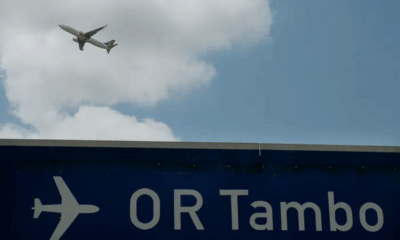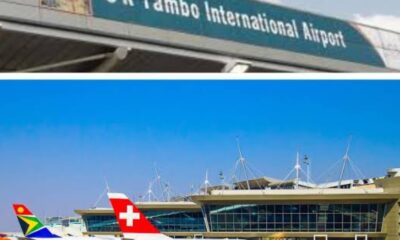Business
After 12 Days on the Ground, FlySafair Pilots Return to the Skies

It took almost two weeks, dozens of delayed flights, and a standoff that captured national headlines, but South Africa’s longest-ever pilot strike has finally touched down.
On Thursday, 1 August 2025, a resolution was reached between airline FlySafair and the Solidarity union, ending the 12-day strike that grounded aircraft, frustrated travellers, and became a flashpoint in aviation labour relations. The breakthrough came through intense facilitation by the Commission for Conciliation, Mediation and Arbitration (CCMA), marking the end of the longest pilot strike and lockout in South African history.
What Was the Fight About?
At the centre of the dispute were scheduling rights, work-life balance, and pilot protections, issues that many passengers never see but that pilots argue affect safety and well-being.
Before the strike, FlySafair operated under what pilots described as a vague system of “soft rules” for scheduling. That flexibility often meant unpredictable hours and inconsistent rest time. According to Solidarity Deputy General Secretary Helgard Cronjé, the final agreement introduces a structured shift roster that will reduce management’s power to change schedules arbitrarily.
Among the key wins: pilots will now receive at least one uninterrupted 60-hour weekend break every six weeks and will get a minimum of 10 days off per month. If they’re called to work on scheduled off-days, they will be able to reclaim that time the following month. Pilots will also be able to swap shifts among themselves for added flexibility.
“It Shouldn’t Take a Strike to Get Basic Rights”
Though Solidarity welcomed the deal, Cronjé was blunt in his reflection: “It is unacceptable that an employee has to strike for 12 days to obtain written confirmation for basic protective measures.”
He emphasised that the dispute could have been avoided if labour concerns had been addressed earlier, instead of requiring union members to air grievances through open letters and the media. The strike affected not just the airline’s bottom line but also thousands of passengers across South Africa, many of whom were left scrambling to rebook flights at inflated prices.
Still, there are wins: in addition to schedule protections, FlySafair pilots will now see salary increases over four years, starting with a 6 percent raise, gradually increasing to 6.9 percent. These increases also apply to medical, accommodation, and travel allowances. For those flying more than 65 hours a month, extra compensation has been guaranteed.
To ease the financial blow from the “no work, no pay” policy during the strike, pilots will receive a once-off ex gratia payment worth 15 percent of their monthly salary, plus the option to cash out five days of annual leave.
Inside the Resolution Room
The deal was made possible by sustained negotiations led by the CCMA’s Duduzile Madubanya and Mahmood Fadal, who were publicly thanked by Solidarity for their long hours and diplomacy.
Cronjé described the agreement as the closest “middle ground” that could be reached between workers and the company, highlighting both compromise and frustration. While the new rules give pilots more structure and rest time, some feel the agreement still only secures bare-minimum protections, not necessarily the standard they aspire to.
FlySafair Responds: Back to Full Capacity
FlySafair, for its part, expressed relief that the dispute had ended. With the strike over, the airline is preparing to restore full flight schedules and bring all aircraft back into service. Chief Marketing Officer Kirby Gordon noted that the return to normal operations would boost seat availability, which could stabilise fares across domestic routes.
“We are pleased to have reached a constructive resolution,” Gordon said. “It allows us to move forward together, restore capacity, and make travel more affordable again for South Africans.”
In recent months, airfares have surged, partly due to reduced availability. With FlySafair now back at full strength, travellers are hoping for smoother skies and lighter ticket prices in the weeks ahead.
Social Media Reaction: Frustration, Then Relief
On X (formerly Twitter), many South Africans who had faced delays or cancellations during the strike were quick to share their thoughts. Some expressed frustration at the lack of communication during the disruption, while others applauded the pilots for standing their ground.
One user posted:
“Glad FlySafair pilots got what they needed. Hope the airline learns to respect their people before it affects the whole country again.”
Another wrote:
“Missed a wedding because of this strike. Happy it’s over, but not happy it had to come to this.”
The public mood now seems to hover between relief and reflection, with many calling for more transparent communication and fairer working conditions across the aviation sector.
A Flight Path Forward
With the turbulence now behind them, both FlySafair and its pilots face the next chapter, one that will be watched closely by other airlines, unions, and travellers. Whether this becomes a new benchmark for pilot rights in South Africa or a temporary truce remains to be seen.
For now, the runways are open, the planes are flying, and the country’s longest-ever pilot strike has officially landed.
Also read: FlySafair Pilots Say Enough Is Enough: Pay, Fatigue and Frustration Fuel Stand-Off
Follow Joburg ETC on Facebook, Twitter, TikTok and Instagram
For more News in Johannesburg, visit joburgetc.com
Source: Business Tech
Featured Image: Getaway Magazine



























